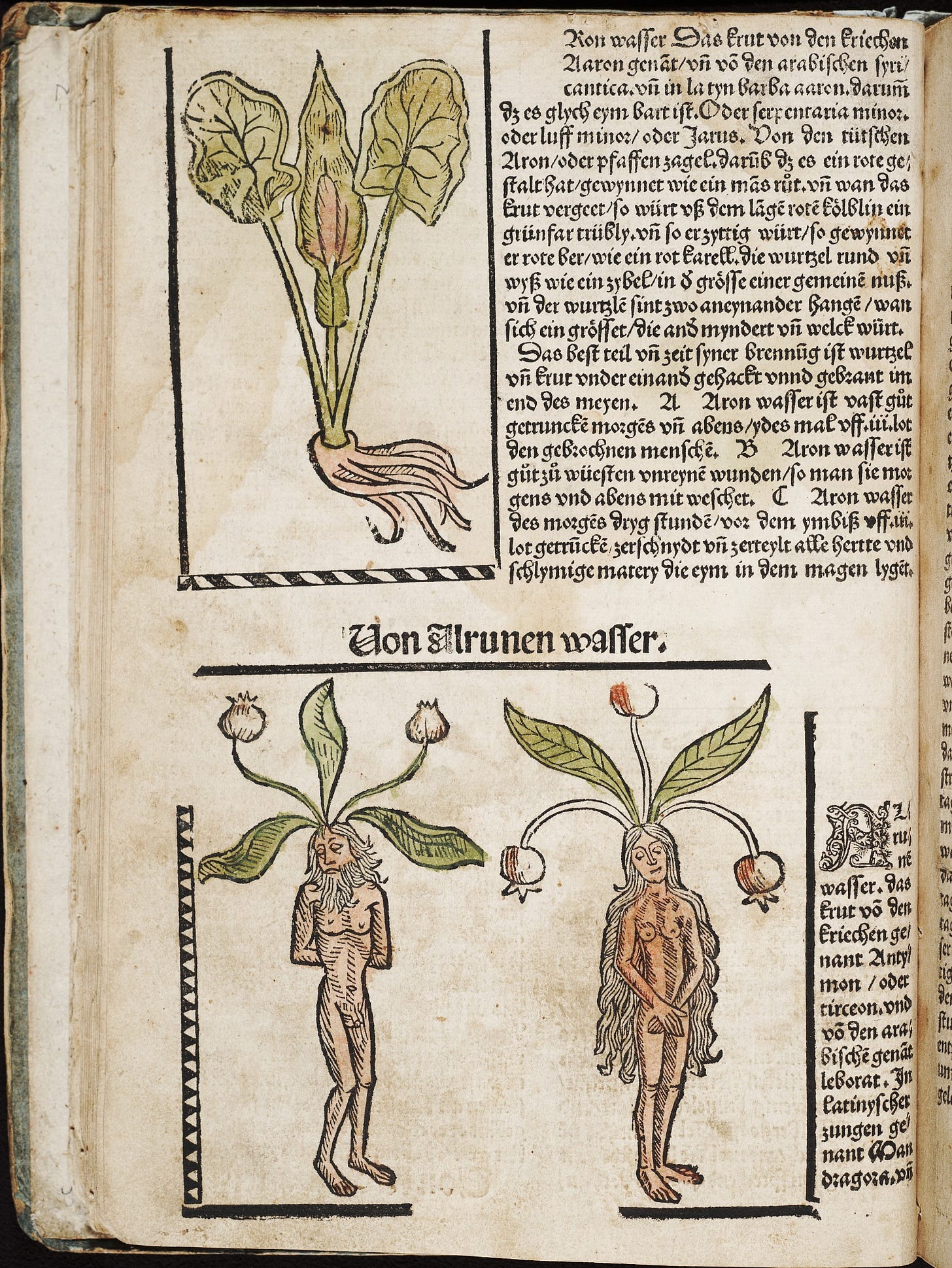Woodspell was based on bitters. Over the years I’ve experimented with all sorts of herbs and methods, trying to create the perfect bitters blend. Some experiments were absolutely horrendous and others opened up my eyes to how magical these herbs and formulations are. Now that my focus is moving away from actually selling bitters, I thought this would be a perfect opportunity to let you in on my secrets.
Whenever I’m interviewed for a podcast, they always ask: why bitters?
It’s a curious thing, because looking back, I really can’t pinpoint an exact moment or reason why I started making them. Like with the Lunica Planner, it was just something that had to be made. But once I started making them, I was hooked.
I tell those asking that question that I create bitters because they are our oldest ancestors. Millions of years ago when humans first appeared on the scene, essentially all plants were extremely bitter, most even being toxic. Over time, the plants co-evolved with humans. They became less bitter, more palatable so that we could ingest them. In turn, we spread their seeds across the land.
Their journey to the tame plants we know now was due to both evolution as well as the shaping by the human hand as we selected and replanted future generations of plants. After a millennia, most of the plants we eat now contain very few bitter compounds compared to their ancestors. So working with bitter plants is a rare opportunity to connect with the most ancient plants that grew on this earth. They are a remnant of those earliest years, our oldest ancestors.

On our journey away from bitter foods, we lost something essential too. Try to soak in the fact that we ingested these bitter plants for thousands of years. When you co-evolve with another species, you become dependent on each other. While we rely on plants for food, we also became reliant on them for overall metabolic function in the body.
You see, the medicine of bitter herbs is a trick. What happens when we ingest something bitter is that our tastebuds think we are eating something toxic because of those early years when most plants were quite poisonous. Most poisonous plants are bitter, so those remnants set our body on high alert. As soon as the tastebuds come in contact with bitter compounds they send signals directly to the gut to kick it into high gear. The goal is to eliminate the “toxic” substance as quickly as possible. So if our gut is firing on all cylinders, we are able to get whatever set off those alarms out of our system ASAP.
The medicine and process of bitters is a primal thing. It is a survival mechanism our bodies learned thousands of years ago. Now, they are links to the past and a key to future health.
These bitter plants are so interwoven with our own DNA that we have 25 bitter taste receptors, whereas other flavors such as sweet, salty, umami, or sour only have 3 to 5. This is an ancient process that developed over such a long period before these other flavors even showed up.
So the bitter taste receptors not only are useful if you ingest something toxic, but they are also essential for tricking your body into keeping up digestive flow. The result of this in our daily life is that we experience less indigestion, cramping, bloating, and a variety of other common digestive complaints. Plus, this also supports liver and kidney function as bile secretion increases.
Scientists have even recently found that there are bitter receptors on the ovaries! Wild, I know. They discovered that incorporating bitter plants actually improves certain female reproductive issues such as PCOS and infertility.
The more we learn about the specific functions of bitters on the body, the more we understand just how important of a role they played in our own evolution as a species. When we introduce bitters back into our modern diet, we are adding a key building block to overall health. It isn’t uncommon for people to begin craving more bitter and less sugary foods when they take them on a regular basis. This is great for those attempting to curb sugar cravings or even alcohol intake. A nightcap of sparkling water and bitters is so simple and delicious.
The benefits of bitters really affect nearly every part of the body either directly or indirectly. For instance, they may even support a more balanced mood as we contain neurotransmitters in the gut which is kept in check by regular use of bitters. When our gut is happy, our brain has a much better chance of being happy as well.
To make the best use of bitters, they are best taken 15 minutes prior to a meal so that the digestive system can get primed and ready to go. It is also important that the bitter flavor is tasted by those receptors, so do not put the bitters in juice or other flavorful drink before taking. You can take them straight from the dropper if you’re brave, or in a small amount of water.
While bitters are magical, those who are pregnant should avoid the more potent bitters as they can cause uterine contractions. Bitters may also have a laxative effect, which can be a little too intense for those who already have compromised guts. Because of this, people with gastritis, peptic ulcers, kidney stones and gallbladder disease should avoid bitters. The specific herbs used in a particular bitters blend will also play a factor in determining if there are any other contraindications.
While I could wax poetic about the virtues of bitters all day, let’s get into the nitty gritty of how I craft the perfect bitters blend.





